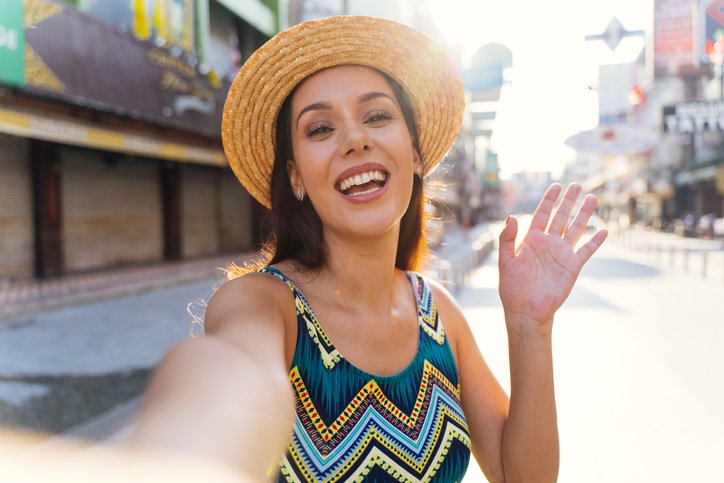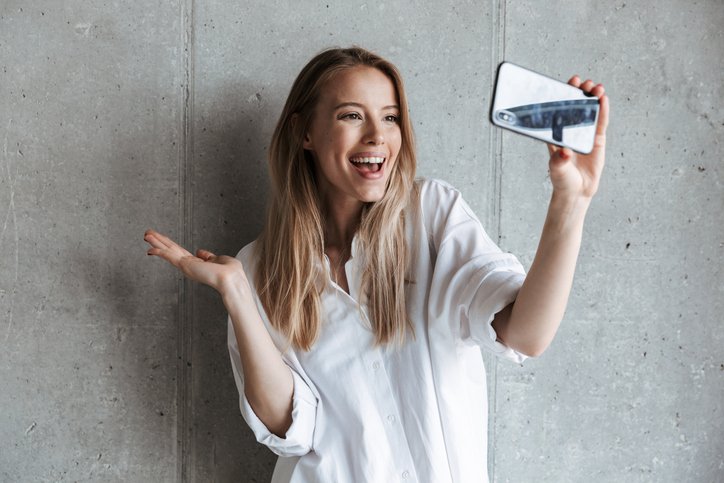Feel-Good Facial Lighting
I was an art major in college, and as part of my course of study, I had to take a photography class. While I didn’t end up with a career behind the lens, I learned many lessons that have transitioned into my role as a marketing professional, specifically as a marketing professional in the lighting industry. Lighting plays an integral role in many, if not all, artistic endeavors including photography, interior decorating, painting, and graphic design. The way light reflects off surfaces, colors, skin tones, and especially facial features can make them appear differently even when nothing else has changed besides the light source. Now that nearly everyone in the world has a camera in the palm of their hand, it is important to understand even just a few basic facts about how lighting can affect videos and photographs of friends, family, and even yourself (the ever popular “selfie.”) Having just returned from my college reunion where taking “selfies” in the alumni tent was nearly a main event, I thought, “Who doesn’t want to be viewed in the best light possible?”
The type of light in a space will have a lot to do with how faces appear in life and in still or moving photography. Tinted light from colored bulbs or beams coming from different angles can cause harsh lines or artificial appearances. Teeth and the whites of eyes can look more yellow and facial wrinkles or blemishes can be unnaturally enhanced. It’s best to avoid these lighting conditions if photographing an event or special occasion. Try to reposition your subject or yourself in a more favorable location.
We often talk about how daylight is the gold standard when it comes to replicating authentic colors and true-to-life representations. And while that’s true, bright sunshine or a single bulb that mimics bright sunshine from above can cast dark shadows making noses, ears, and eye bags appear more prominent, larger, and sharper. Contrary to the shadows, bright spots can exaggerate facial asymmetries, wash out skin tones, and emphasize undesirable qualities like shiny skin or glare from eyeglasses. It can also cause people to squint or scrunch their faces . . . usually not a good look for anyone! While natural light or bulbs that simulate natural light are more photo-friendly, managing the distribution of that light is the key in achieving the ideal situation.
The most agreeable light for photos, videos, selfies, and general existence is a diffused light with a color temperature in the 4500–5000 range on the Kelvin scale. On clear, sunny days the best light is a few hours after sunrise or a few hours before sunset. This is when the sun isn’t too high in the sky to create those dreaded shadows. On a cloudy day, light conditions are naturally diffused, so snap away to your heart’s content!
Indoors you can use the light from windows or skylights making sure your subject is facing the light source and not have their back to it. If sunbeams are too pronounced, try adding a sheer white curtain to aid in diffusion. When natural daylight isn’t present, bulbs with Kelvin temperatures in the preferred range can help achieve the perfect setting. Be sure to use multiple bulbs at different angles to gently “erase” imperfections and eliminate dark shadows. Frosted bulbs are an excellent choice for soft illumination.
Putting your best face forward requires the best light conditions. Graduate to the most flattering lighting options for your space, event, home, or wherever you want to look your best. Our experienced lighting staff can help educate with more advice. Just call 1-800-624-4488 or try our convenient \pop-up chat feature at the bottom right corner of our web pages.










